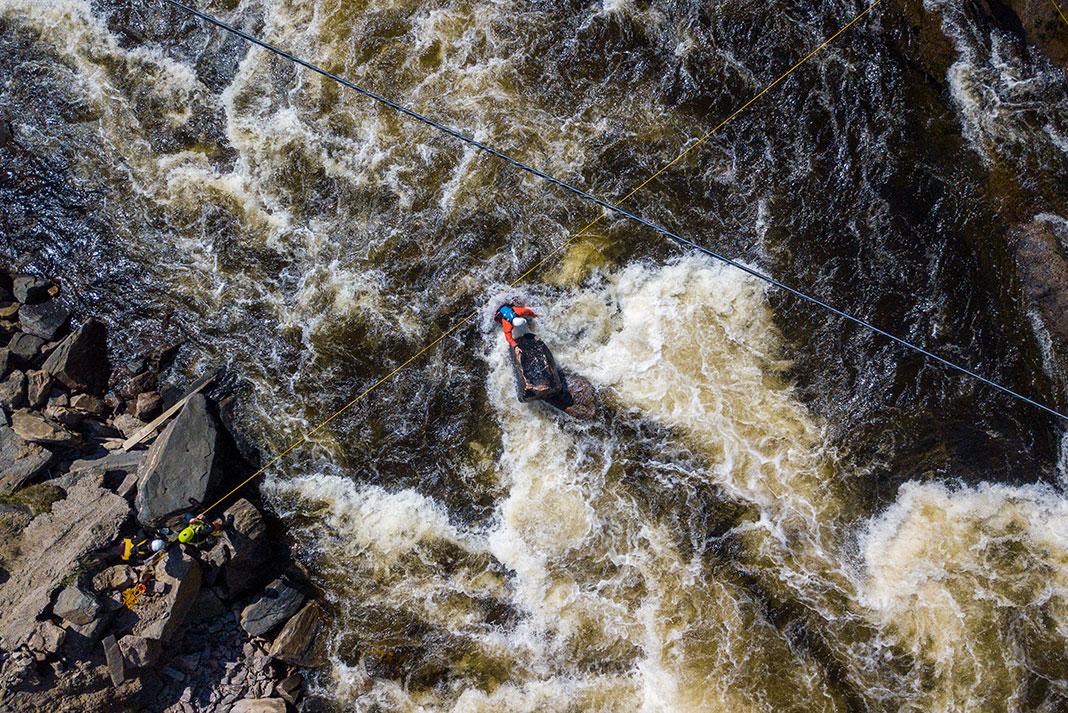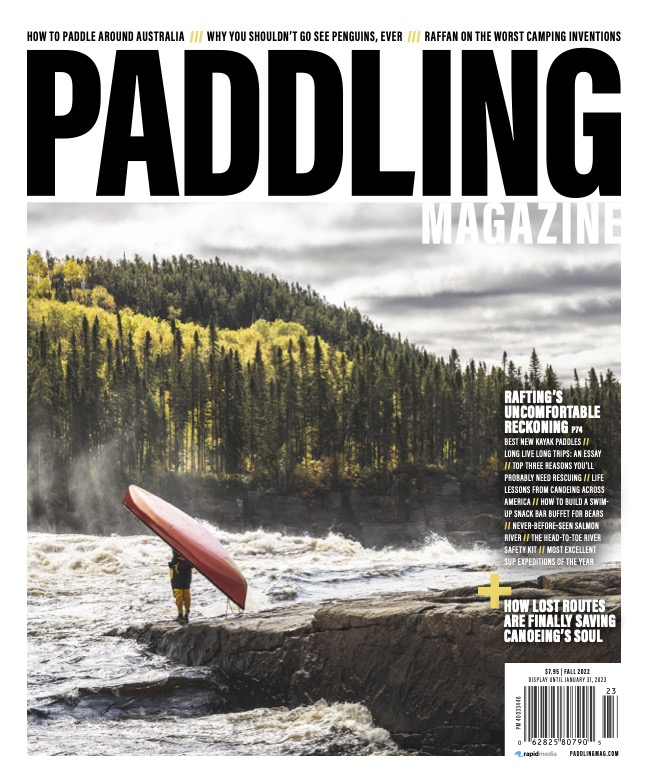Products You May Like
I was not much of a reader as a kid. In third grade, I won the Most Improved Reader award, which makes me think I was pretty bad at it. Yet, my parents regularly took me into town to the library as part of their attempts to make me less feral. I can’t imagine what I was thinking when I brought home an arcane book on knots.
Knots are an essential rescue skill for paddlers
In 1944, sailor Clifford Ashley published his encyclopedic Ashley Book of Knots. A hand-illustrated source for more than 3,000 knots, bends and hitches, it is still considered an artistic masterpiece today, even with its hokey Captain Highliner cover illustration. The book is massive in scope, with detailed instructions for every variation of every known knot. It standardized the knot names we still use today.
Even though I’d never set foot on a sailboat, moored a ship to a dock, seized, spliced or hitched anything, I was fascinated by it as a kid and read the detailed instructions cover to cover. And, with miles of bailer twine to work with at the farm, I went at learning my knots.
With carabiners and cam straps, are knots still needed?
Ashley would be rolling over in his grave now. Knots have mostly disappeared from the paddler and outdoorsy person’s skill set. Cam straps have eliminated the need to use any hitch or knot to tie our kayaks on the roof. Today many paddlers would be hard-pressed to securely tie down a boat with just a single rope. Indoor climbing gyms have evolved to clip and climb, where the only needed skill is to ensure the carabiner gate is locked on the auto belay—no need to even touch a rope anymore.
Tents and tarps come pre-rigged with buckles, clips and pre-tied loops. Worse yet, modern river rescue education has convinced us the only knot we really need to know is the figure eight. The rationale has merit: novice paddlers or Joe Firefighter, who may take these courses yet rarely, if ever, use the skills, will forget anything other than the most basic material.
Yet, can we be as arrogant as to think the other 2,999 knots in Ashley’s book are unnecessary?
We have confused the laudable goal of simplifying the instruction of complex technical knowledge to beginners—what is done in beginner paddling courses, river rescue certification courses, and what I do as a college professor—with an assumption complex technical knowledge is unneeded. By teaching complex concepts simply, we have grown to believe everything worth teaching is simple.
It was not this way in the beginning.
Every knot has its purpose
Setnicka’s 1981 Wilderness Search and Rescue book used all 640 pages to dig into the nitty gritty and blew the lid off technical rope rescue. He didn’t try to simplify the vast complexity, variation and adaptation required in technical rescue scenarios. It did not take long for this seminal work to be applied to the whitewater world, with Bechdel and Ray’s 1989 River Rescue bringing river rescue to the masses by adapting mountain climbers’ rope expertise to river applications. It was not simple and, to keep your options open, more knowledge than a figure eight knot was required. Think Tyrolean traverse and cross river zip lines, windless winches and multiple rope lowering systems.
Rarely used, but when needed, it’s needed.
Ropework is often not simple, requires practice and asks more of us as skilled and responsible paddlers.
Ashley made no apology for his 3,000 knots. For every single one, he explained its purpose and use. The majority of these knots had to be known to be a sailor.
Collectively, whitewater paddlers have convinced ourselves we don’t need to know knots. But that leaves us carrying our throw ropes around as vastly under-utilized tools. As a 10-year-old kid, I sensed there was an opportunity in knowing knots. And as a career river guide, I now know knots create options when they’re needed most.
Jeff Jackson is a risk management consultant and professor of outdoor adventure at Algonquin College.
Students work at setting up a stabilization line for the victim during a foot entrapment drill. | Feature photo: Caleb Roberts

 This article was first published in the Fall 2022 issue of Paddling Magazine.
This article was first published in the Fall 2022 issue of Paddling Magazine.